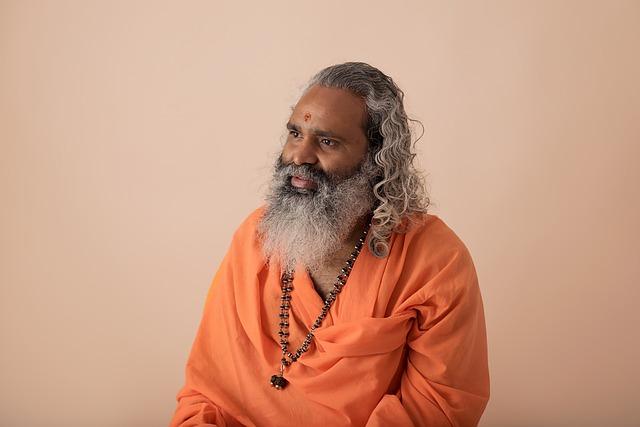In the stillness of the mind lies a universe of tranquility, waiting to be discovered. As the chaos of the modern world swirls around us, the ancient practice of meditation offers a sanctuary of peace, a journey inward where serenity and clarity reside. Central to this voyage is the breath—an unassuming yet powerful guide that can lead us to the depths of our consciousness. In this article, we explore the transformative potential of breathing techniques, those subtle rhythms and patterns that can unlock the full potential of deep meditation. Join us as we delve into the art of breathing, a practice that not only calms the storm within but also connects us to the profound stillness that is our true nature.
Exploring the Foundations of Breath Awareness
In the practice of deep meditation, the simple act of breathing becomes a powerful tool for transformation. At its core, breath awareness invites us to engage with our most basic life force in a profound way. The foundation of this practice lies in the ability to observe the natural rhythm of the breath without altering it. This gentle observation cultivates a state of mindfulness, allowing the mind to settle and focus. By tuning into the breath, we create a bridge between the conscious and subconscious, facilitating a deeper state of meditation.
- Presence: Observing the breath anchors us in the present moment, reducing distractions and enhancing concentration.
- Calmness: A steady focus on breathing promotes relaxation, reducing stress and anxiety.
- Awareness: As we become more attuned to our breathing, we develop greater self-awareness and insight.
These foundational aspects of breath awareness not only enhance the meditation experience but also extend their benefits into daily life, promoting a sense of peace and clarity.

Harnessing the Power of Pranayama for Inner Peace
In the quest for inner tranquility, mastering the art of pranayama is pivotal. This ancient practice, deeply rooted in yogic traditions, offers a pathway to profound calmness through controlled breathing techniques. By focusing on the breath, you can cultivate a serene state of mind, which is essential for deep meditation. Here are some effective pranayama techniques that can help you achieve this:
- Nadi Shodhana (Alternate Nostril Breathing): This technique balances the mind and body by harmonizing the left and right hemispheres of the brain. Begin by closing your right nostril with your thumb, inhale deeply through the left nostril, then switch and exhale through the right. Repeat on the opposite side.
- Kapalabhati (Skull Shining Breath): A more energizing practice, Kapalabhati involves short, powerful exhales and passive inhales. This technique not only purifies the respiratory system but also clears the mind, preparing it for deeper meditation.
- Bhramari (Bee Breath): Known for its calming effects, this technique involves making a humming sound while exhaling. The vibrations help to soothe the nervous system, reducing stress and anxiety.
By integrating these pranayama practices into your daily routine, you can enhance your meditation sessions and experience a deeper sense of peace and clarity.

Techniques to Cultivate Mindful Breathing in Meditation
In the pursuit of deep meditation, mastering the art of mindful breathing can be transformative. Mindful breathing is more than just a practice; it is an invitation to connect with the present moment. To begin, one might start by observing the natural rhythm of their breath without attempting to alter it. This simple observation can gradually lead to a deeper awareness of each inhalation and exhalation, cultivating a sense of peace and clarity. Additionally, focusing on the sensation of air entering and leaving the nostrils can anchor the mind, preventing it from wandering.
- 4-7-8 Breathing Technique: Inhale quietly through the nose for four counts, hold the breath for seven counts, and exhale slowly through the mouth for eight counts. This technique can calm the nervous system and prepare the mind for meditation.
- Box Breathing: Inhale for four counts, hold for four, exhale for four, and pause for another four. This cyclical pattern can help to center the mind and reduce stress.
- Alternate Nostril Breathing: Close one nostril and inhale through the other, then switch nostrils for the exhale. This practice can balance the mind and body, fostering a state of equilibrium.
Integrating these techniques into your meditation routine can enhance your practice, allowing for a more profound and mindful experience. As you explore these breathing methods, remember that patience and consistency are key to unlocking the full benefits of meditation.
Recommendations for Incorporating Deep Breathing into Daily Practice
Incorporating deep breathing into your daily routine can be a transformative practice, enhancing both meditation and overall well-being. Here are some practical suggestions to seamlessly integrate this powerful technique into your everyday life:
- Morning Ritual: Begin your day with a few minutes of focused breathing. As soon as you wake up, sit comfortably, close your eyes, and take slow, deep breaths. This helps set a calm and centered tone for the day ahead.
- Mindful Breaks: Use short breaks during your work or study sessions to engage in deep breathing. Step away from your tasks, find a quiet spot, and inhale deeply through your nose, holding for a moment before exhaling fully. This practice can refresh your mind and boost productivity.
- Evening Wind-Down: Incorporate deep breathing into your evening routine to unwind. As you prepare for sleep, focus on deep, rhythmic breaths to release the day’s tension and promote a restful night’s sleep.
By embedding these practices into your daily schedule, deep breathing becomes a natural part of your life, enriching your meditation experience and fostering a sense of tranquility and clarity.
Closing Remarks
As we draw our exploration of breathing techniques for deep meditation to a close, we find ourselves standing at the threshold of tranquility, armed with tools that transcend the ordinary ebb and flow of life. These techniques, though seemingly simple, unlock a gateway to profound stillness and inner clarity, inviting us to embark on a journey within. Whether you’re a seasoned meditator or just beginning to explore the depths of your consciousness, remember that each breath is a step closer to serenity. Let these practices be a gentle guide, a whisper of calm amid the clamor of the everyday. As you continue to weave these techniques into your meditation practice, may you discover a richer, more harmonious connection with yourself and the world around you. Inhale deeply, exhale slowly, and let the quietude of your breath lead you to the heart of your being.
